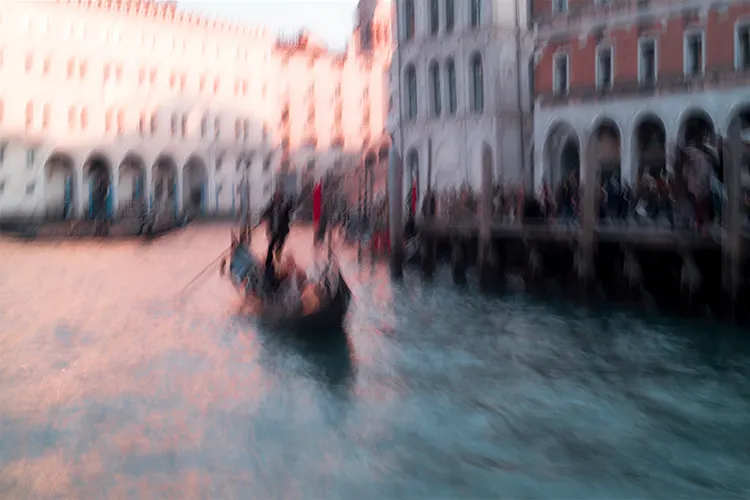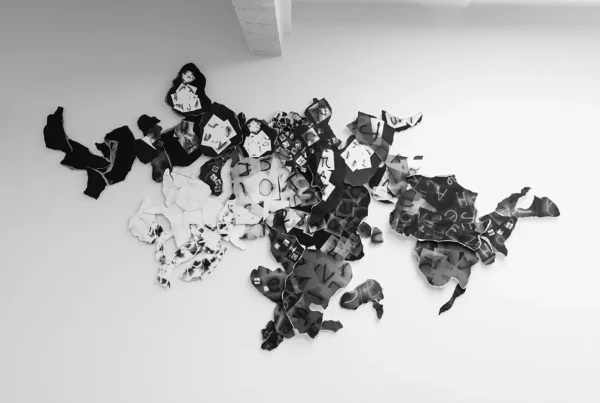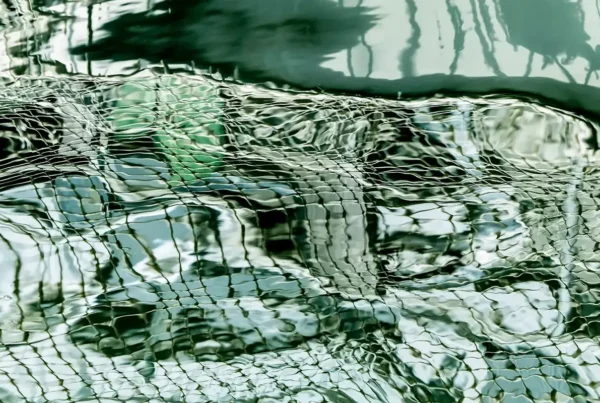“I want to photograph the way Claude Monet painted.”
A Journey from Snapshots to Artistic Vision
Cornelia B. Bienz’s path to photography was not one of deliberate ambition but of quiet discovery. Her relationship with the camera began in her school days when she first experimented with analogue photography. She found joy in capturing images and developing them in the darkroom, yet her career initially took a different direction. As a flight attendant, her camera became a companion for documenting her travels—primarily through casual snapshots and holiday pictures. Photography remained a personal passion rather than a profession.
Everything changed in 2015 when an unexpected opportunity reshaped her perspective. She came across a course titled ZEN Photo Art – Shaping the Void by Jo Fahl, and something about its description resonated deeply. Acting on instinct, she enrolled, unaware that this decision would ignite a profound artistic journey. The experience shifted her understanding of photography, transforming it from a simple means of documentation into an expressive medium. Eager to refine her craft, she sought structured training and enrolled in a part-time photography and image processing program at the European Photo Academy in Raststatt under Matthias Gessler. The academy’s blend of online seminars, in-person workshops, and project-based learning provided her with the technical foundation and creative space to explore photography more deeply.
Over time, her artistic focus became increasingly defined. She gravitated towards styles that embraced stillness and contemplation, particularly macro and ZEN photography. Macro photography allowed her to uncover hidden beauty in everyday objects, capturing them from unusual perspectives in both color and black and white. Meanwhile, ZEN photography became more than a technique—it evolved into a philosophy. For Bienz, it was an act of surrender, a meditative engagement with the present moment, where the impulse to press the shutter arose naturally. The resulting images, often characterized by vast emptiness, invited viewers to step away from the chaos of daily life and immerse themselves in quiet reflection.
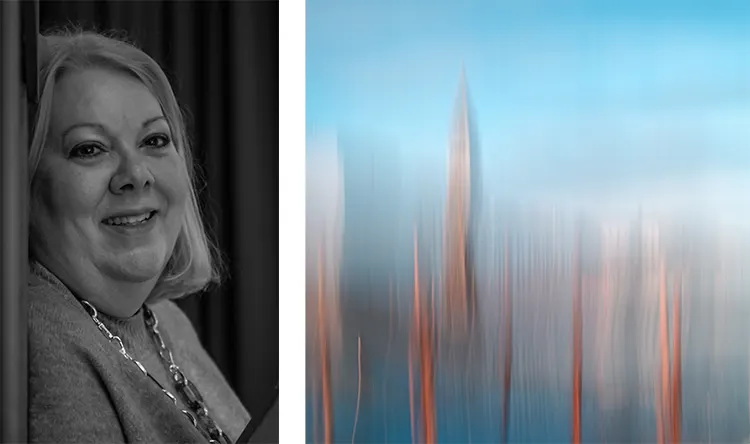
Cornelia B. Bienz: Painting with the Camera
In her artistic evolution, another pivotal moment arrived when she encountered Intentional Camera Movement (ICM) photography. Without prior knowledge of the technique, she felt an innate desire to “photograph the way Claude Monet painted.” The works of the Impressionists, particularly Monet, along with the atmospheric paintings of J.M.W. Turner, had long captivated her. Their mastery of light, movement, and color inspired her to seek a way of translating similar sensations into photographic form.
As if by fate, she stumbled upon ICM photography, a technique that allowed her to achieve precisely what she had envisioned—creating images that transcended representation and evoked emotions through blurred forms and fluid motion. The process became a means of expression beyond words. She refers to her approach as “heart photography,” an intuitive practice that captures the essence of a moment rather than its literal details. In this style, concrete subject matter becomes secondary to the atmosphere, mood, and emotional resonance.
Through ICM photography, Bienz discovered the ability to depict the world in a way that feels dreamlike and sometimes even magical. She is particularly drawn to historical cities, where a sense of timelessness lingers in the streets and architecture. Initially, she believed that locations such as Venice, Rome, and Paris were ideal subjects, as their rich histories and romantic decay complemented the fluidity of ICM. However, she soon realized that urban landscapes and human figures could also serve as compelling canvases for this approach. Whether capturing the flickering lights of a cityscape or the ethereal movement of a passerby, her work transforms ordinary scenes into poetic visual narratives.

The Art of Seeing Beyond the Visible
For Bienz, photography is not confined to a traditional workspace—it is a practice she carries with her everywhere. Her camera is ever-present, much like a trusted companion, ready to capture fleeting moments of inspiration. While she edits her images using a laptop and minimal post-processing in Photoshop, she places great emphasis on composing her shots in-camera, striving to achieve the final vision at the moment of capture. Her creative process is immersive; once she begins taking photos, the outside world fades away, and she enters a state of focused presence where time and distractions dissolve.
Her artistic influences, rooted in Romanticism and Impressionism, are evident in her work. The luminous turbulence of Turner’s seascapes and the soft, shifting light of Monet’s paintings are qualities she seeks to evoke through her photography. Instead of painting with a brush, she paints with movement, light, and exposure. She does not merely document a scene—she interprets it, infusing it with emotion and a sense of fleeting beauty. This approach allows her to move beyond conventional photography and into a space where images feel more like memories or dreams than static representations.
Among her most cherished works is a piece titled Grand Canal, Venice. Venice holds a deep personal significance for her, drawing her back several times a year. The city’s dual nature—its breathtaking grandeur contrasted with its slow decay—fascinates her endlessly. In her ICM images of Venice, the architectural details dissolve into a haze of color and light, reminiscent of old master paintings. Her work does not simply capture the physical aspects of the city; it encapsulates its soul. It invites the viewer to step into a timeless vision of Venice, where past and present blend seamlessly, much like the city itself.
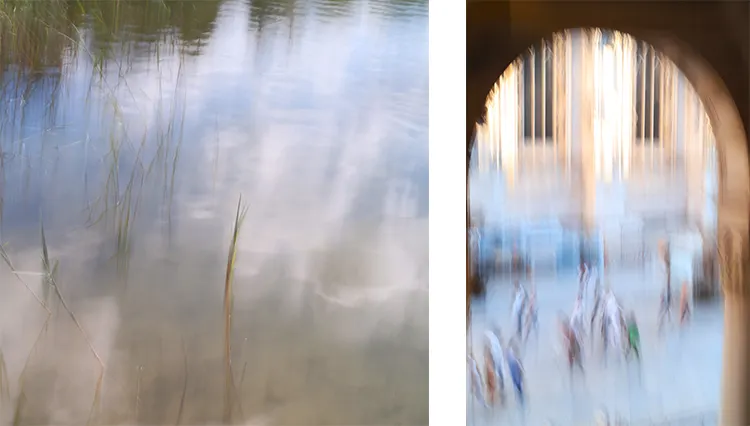
Cornelia B. Bienz: The Future of Heart Photography
Bienz’s artistic journey has been guided more by intuition than by deliberate planning. She never set out to become an artist—it was something that unfolded organically. The turning point came in August 2022 when a fellow photographer encouraged her to share her work publicly. Taking a leap of faith, she had business cards printed in early 2023, followed by the launch of her website in March of that year. What began as a personal passion had quietly evolved into a career.
While ICM photography currently defines her artistic style, her work continues to evolve. She approaches photography with an openness to change, allowing each moment to shape her creative direction. Her process is deeply rooted in observation and feeling—before pressing the shutter, she often spends extended periods simply absorbing her surroundings, attuning herself to the atmosphere and the interplay of light, shape, and color. It is a form of artistic mindfulness, a practice that requires patience and presence.
Looking ahead, Bienz envisions bringing her images into new spaces and contexts. One of her aspirations is to collaborate with the travel industry, specifically by decorating cruise ship cabins with photographs of the destinations on their itineraries. Such an endeavor aligns perfectly with her work’s essence—creating images that transport the viewer, not just visually, but emotionally. Through her lens, she continues to offer audiences an invitation to pause, dream, and see the world through a softer, more poetic gaze.
